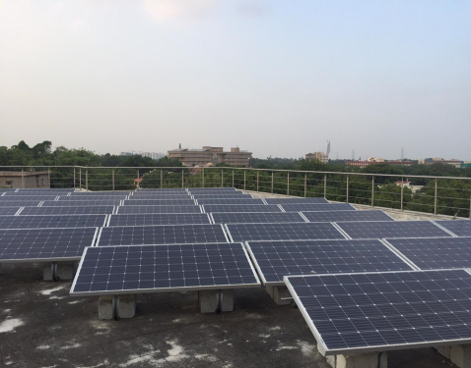Location: Delhi, India.
Work area: Products, Policy, Process.
Summary: GGHH sustainability focal points have engaged the National Centre for Disease Control procurement officers and supply chain professionals to move sustainability through the agency.
Initial situation
The National Centre for Disease Control (NCDC) has made enormous strides in incorporating environmentally friendly practices and systems into its day-to-day workings to ensure sustainability practices are embedded in all departments and in the institute as a whole.
In 2018, NCDC participated in the Sustainable Health in Procurement Inception workshop in India where a comprehensive overview of green procurement was introduced, building on and extending the work the agency had already conducted.
Proposed alternatives
The following goals are being pursued by NCDC in order to promote sustainability:
- Conserve natural resources and decrease pollution
- Minimize water and energy usage where possible
- Avoid environmental health hazards on campus and within the community
- Support locally produced goods and services
- Improve the availability and use of environmentally affirmative products
- Encourage suppliers to reduce their environmental impact and to send that message to establish the same in their supply chains
- Educate and inform prime user to end users, and suppliers about the best environmentally responsible procurement choices
- Phase out PVC gloves and procure nitrile gloves (non-PVC) in most laboratories
- Substitute sodium hypochlorite with a suitable alternative
- Maintain and extend mercury-free status. Delhi has been declared a mercury-free zone. As a result, there has been no procurement of mercury containing medical devices in the health care facilities.
Progress and benefits
NCDC prioritizes a product’s total life cycle cost, rather than just initial costs, considering the following factors:
- Maintenance and support
- Acquisition
- extended warranties
- Disposal costs or trade-in value
- Operation and supplies
- Expected lifetime compared to other alternatives
Other considerations: assessment is the key
- How is the available product used? Consider purchasing re-used / refurbished products such as cartridges, furniture, etc, whenever practical and cost effective – without compromising the safety, quality or performance
- Consider total cost of ownership
- Survey other departments for surplus product they are willing to share
- Survey other departments to determine if they have the product but are not using it
- Determine whether the existing product can be economically and sustainably overhauled
Other quantitative results include:
- Reduced hazardous management costs (e.g. using less toxic products).
- Reduced operational costs (energy savings from efficient equipment).
- Reduced disposal costs (hazardous and solid waste) by generating less waste and using longer lasting products.
- Reduced repair and replacement costs when using more durable and repairable equipment.
- Reduced employee safety and health costs at the facility with reduced potential liability by improving the work environment and minimizing risks to workers
- Reduced material and energy consumption.
Implementation process
Energy:
- Six-meter-wide setback for fire tenders around all the buildings
- Ventilation and natural light dome for basement parking at NCDC
- Installation of solar lights and solar panels for energy savings
Waste management:
- Segregation of waste at the source is one of the most crucial steps in waste management. Categorization of biomedical waste management is done at the source into yellow, red and blue bags. It is important to assure that enough bags are available at all sites.
- All bags are non-chlorinated and of a fixed thickness which facilitates their decomposition.
- Plastic bins are colour coded and made of eco-friendly yet bio medically safe material.
- Efforts are being made to bar-code label disposal bags (per BMW 2016). This change will make the disposal process safer and more responsible.
- Liquid waste generation has been reduced drastically in all labs. Any waste that is generated is autoclaved, in specially procured autoclaves, before being discarded. An ETP (Effluent Treatment Plant) and STP (Sewage Treatment Plant) are being set up in the institute, which will result in a better and more efficient handling of liquid BMW.
- A Central Pollution Control Board (CPCB) certified third-party organization has also been hired for the collection and disposal of all waste according to the norms laid down by CPCB.
- To ensure that the segregated waste is properly and safely handled, regular training programs are conducted for all lab and housekeeping personnel. Moreover, employees have also been vaccinated against Hepatitis B, and a record of the same has also been kept.
Next steps
- Release a green book compiling the initiatives & targets for sustainability in green procurement.
- Develop roadmaps to guide green practices and promote policy transformation.
Information about the organization
NCDC is a Government of India body under the Ministry of Health that has been streamlined to ensure disease surveillance, providing evidence for public health action and enforcing public health regulations. The mandate of the institute broadly covers three areas viz. services, trained health manpower development and research.
